Nevada’s parks, wildlife projects likely to benefit from $350M in federal land sales
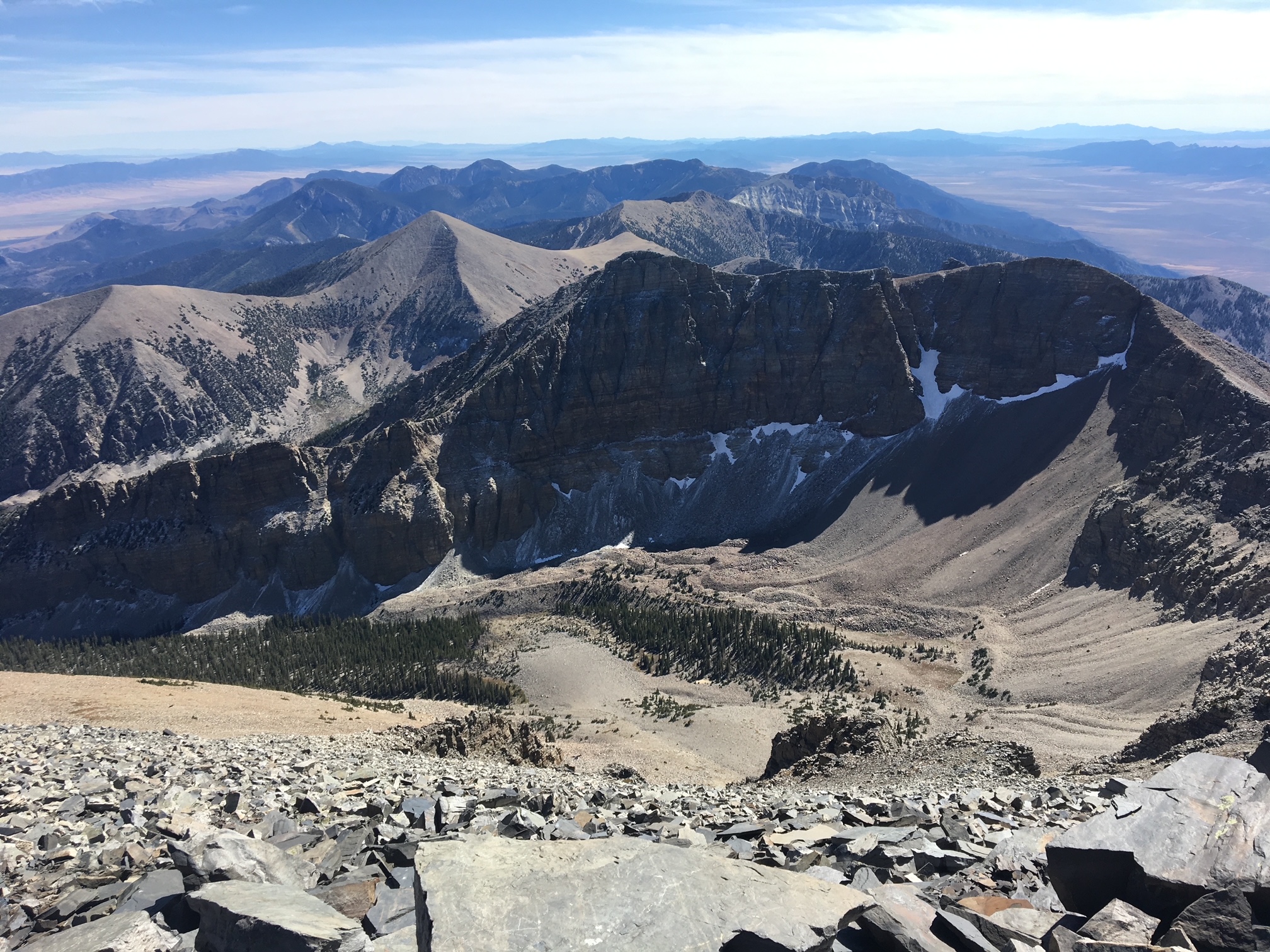
Since the passage of the Southern Nevada Public Land Management Act (SNPLMA) in 1998, more than $4 billion in revenue generated from Las Vegas area land sales has been directed to conservation, park improvement and wildfire prevention projects across Nevada and the Lake Tahoe Basin.
Now, another $348 million in federal dollars is set to be allocated for additional projects, and the federal government is seeking input on where that money should go.
Dozens of projects have been proposed statewide, from those that would help protect endangered Mojave Desert tortoises in rural Southern Nevada to those that would expand city parks in Northern Nevada, all funded by proceeds from SNPLMA sales.
In 1998, Congress passed SNPLMA, allowing the Bureau of Land Management (BLM) to sell public land within a specific boundary around Las Vegas for development. The federal agency manages 63 percent of the state’s land.
Revenue from the land sales is then divided, with the state’s general education fund receiving 5 percent, Southern Nevada Water Authority receiving 10 percent and the remaining 85 percent earmarked for projects across Nevada. The secretary of the Interior ensures the money stays within Nevada for environmental stewardship projects such as conservation, landscape restoration and hazardous fuels reduction rather than funneling the money into the U.S. Treasury, and county, state and federal agencies are then able to apply for the funds for targeted projects.
Read more: 'Phenomenal boon': How Nevada's signature public lands law ushered in growth, conservation
Since SNPLMA’s inception, 19 rounds of auctions have been held, and the act thus far has generated funding for more than 1,500 projects throughout the state.
Last fall, agencies submitted proposals for funds from the 20th SNPLMA round. Four dozen projects totaling $625 million were proposed, and those proposals underwent a multistep review to determine which would leave the largest legacy on the landscape while providing the best value. A total of $298 million in funding is being recommended, with $50 million being added to a special reserve account to cover any additional project costs.
The BLM is accepting comments on the proposed projects through June 6. A SNPLMA executive committee will meet following the comment period to draft a final recommendation to the secretaries of the Interior and Agriculture.
Here are highlights of what’s likely to get approved:
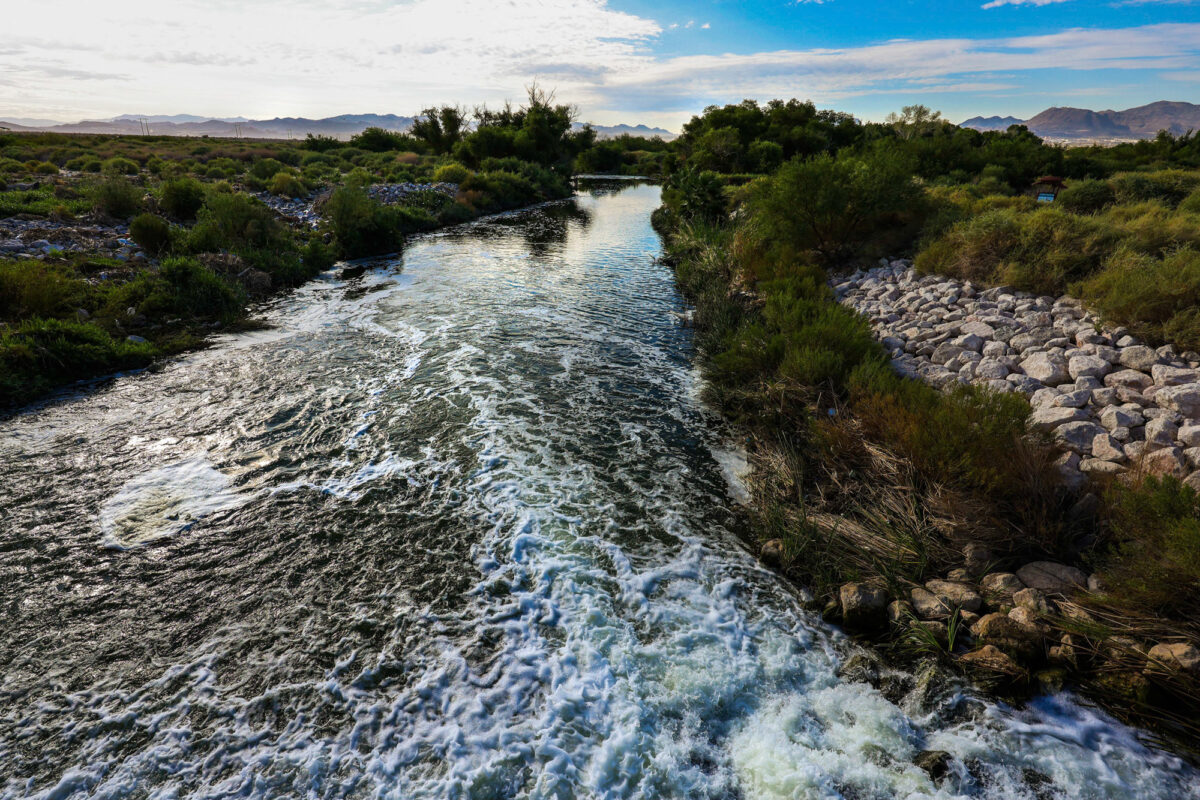
Southern Nevada parks, trails and natural areas
The bulk of the proposed projects involve increasing the quality of and access to parks, trails and natural areas.
In Southern Nevada, the City of Las Vegas is requesting $19.3 million to expand the Bettye Wilson Soccer Complex. Although the fields serve 650,000 participants each year, 90,000 more people are turned away due to capacity limitations.
Clark County is requesting slightly less than $63 million for improvements to Wetlands Park and to construct a new phase of Mountain’s Edge Regional Park outside Red Rock Canyon National Conservation Area. Improvements to Wetlands Park include pedestrian bridges and a designated area for bird and pond viewing; expansions to Mountain’s Edge include soccer and pickleball complexes and a community botanical garden.
Henderson is requesting more than $35 million to renovate the aging Morrell and Downtown parks by adding features such as communal active lawn areas, food truck-pullout parking areas, splash pads, dog parks and reconfigured ball fields.
The City of North Las Vegas is requesting $7.5 million to modernize Valley View Park, including adding a splash pad and dog parks and expanding its playground.
Lincoln County is requesting $27.3 million to construct a new multisport complex on 20 acres on the east side of the town of Panaca, including baseball, softball, football and soccer fields, a standard track and field layout and an indoor activity room.
Southern Nevada Water Authority is requesting $2.2 million to construct a wildlife and bird viewing tower at Warm Springs Natural Area and complete restoration projects on 7 acres in the Las Vegas Wash.
Northern Nevada parks, trails and natural areas
Carson City is requesting $14.9 million to renovate Mills Park, including its Vietnam Veterans Memorial, expanding its skatepark and adding shade structures and a splash park.
Churchill County is requesting $32.4 million to construct the 3C Recreational Complex in Fallon at the old Churchill County Fairgrounds, adding elements including a covered picnic area, playground, natural areas and a splash pad.
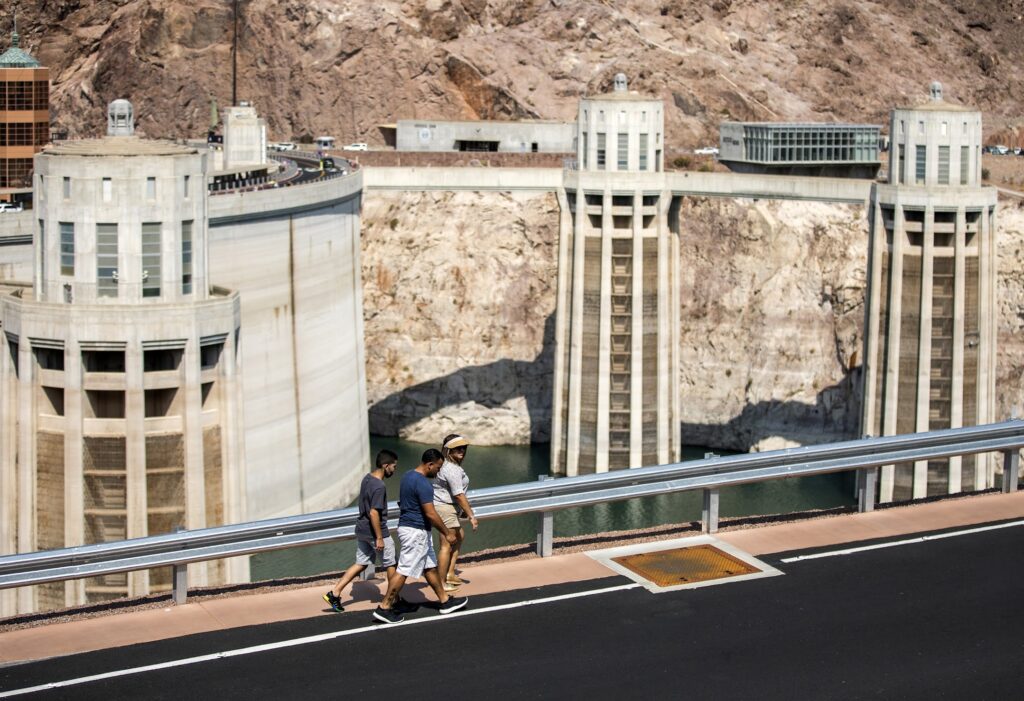
Campgrounds, trails and Hoover Dam
A campground destroyed after a 2016 wildfire at Great Basin National Park could be rebuilt, and access to portions of the park in eastern Nevada could be improved if the National Park Service’s $4.2 million request is approved.
The Strawberry Creek area was devastated by a wildfire that destroyed a newly built campground, bathrooms and horse corral; it also damaged bridges, trails and signs. That infrastructure, constructed with prior SNPLMA funding, was just 2 years old.
The park service wants to construct a new campground, including shade structures, bathrooms and sites accessible to people with disabilities, as well as fix trails and construct a new equestrian corral. The project will “increase recreational and camping opportunities while protecting the natural and cultural resources that make the canyon so spectacular,” the park service wrote in its proposal.
Other requests include slightly less than $23 million from the Bureau of Reclamation to draft design documents for improving public restroom and drinking water systems at Hoover Dam, as well as refurbishing popular tourist stops. Improvements would include installing new, multilingual exhibits, adding shade covers and addressing accessibility issues.
The U.S. Forest Service is looking to reconstruct the popular 5.1-mile Bristlecone and the 1.5-mile Cathedral Rock trails in the Spring Mountains. The trails were damaged during Tropical Storm Hillary in August and the agency estimates it needs about $5.3 million to repair them.
And a $6.1 million proposed telecommunications modernization project is proposed by the BLM at Red Rock Canyon National Conservation Area to improve Wi-Fi and cellphone service.
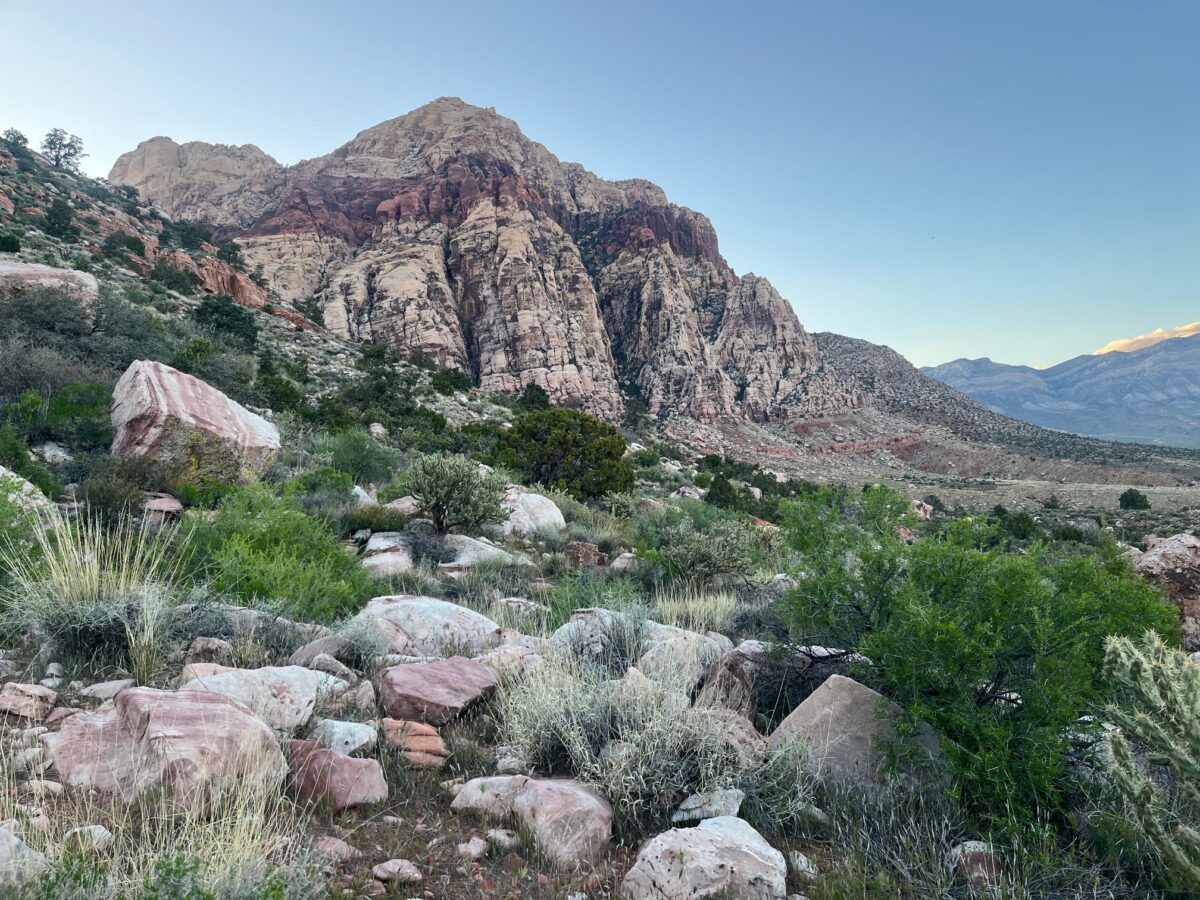
Sheep, trout and birds
Nevada’s plants and wildlife could be big winners under the 20th round of funding.
The U.S. Fish and Wildlife Service is seeking $1.9 million to upgrade seven aging water guzzlers on the Desert National Wildlife Refuge to aid desert bighorn sheep conservation. The guzzlers are in areas where water is unreliable or not available, and many are aging or broken.
The agency is also seeking $5.4 million to establish a landscape-scale migratory bird monitoring and improvement program in Nevada, including tagging species and restoring critical migratory bird nesting and stopover habitat at areas from Mt. Charleston in Clark County to Pahranagat Valley in Lincoln County and Great Basin National Park in White Pine County.
The agency is also looking for $5.1 million to increase the supply of native plants and seeds across the Mojave Desert for restoration projects and to help offset the effects of nonnative, invasive plants.
The National Park Service is seeking $1.9 million to renovate the only Bonneville cutthroat trout brood pond in Nevada, thereby creating a source of the fish to stock Nevada streams; conduct “fishing with a ranger” programs at Great Basin National Park, where visitors can borrow fishing gear and receive basic instructions on how to fish; and improve cutthroat trout habitat in Nevada. The brood pond “has suffered from years of neglect and is in desperate need of renovation,” according to the agency.
The park service is also seeking $8.7 million to address illegal roads in the Government Wash and Overton Arm of Lake Mead National Recreation Area. The lake’s level has dropped more than 160 feet since 1983, and there are now hundreds of miles of documented illegal roads across the recreation area.
Officials estimate there could be two to three times as many roads that they haven’t documented. The roads run through culturally significant sites as well as rare soil ecosystems.
Wildfire prevention
A half dozen projects totaling $25.7 million were proposed, including:
- creating wildfire and utility resilience corridors along the east and north shores of Lake Tahoe,
- performing fuel reduction and meadow restoration at Tahoe’s Baldwin, Freel, Hellhole and Meiss meadows,
- reducing fuels around Mt. Charleston,
- creating a defense zone around Carson City’s Clear Creek area,
- and performing fire mitigation and restoration around the Whittell Forest and Wildlife Area west of Washoe Valley.
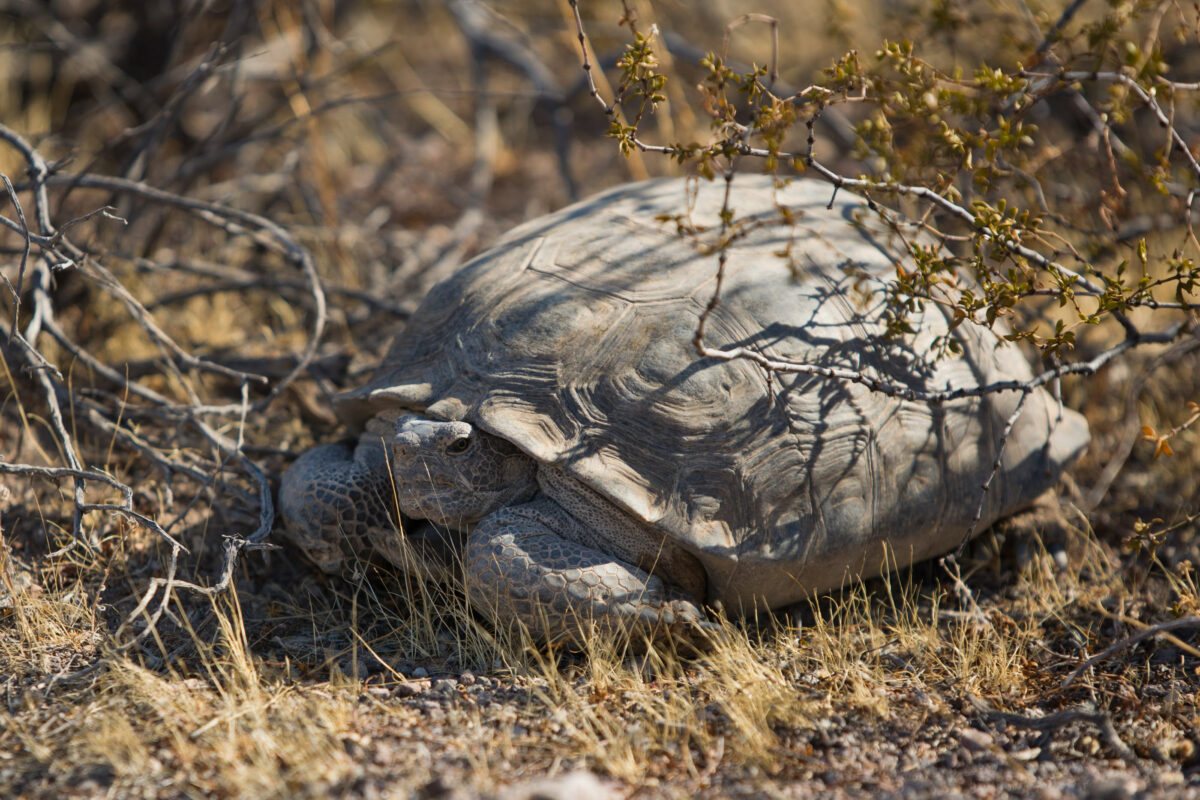
Tortoise conservation
Clark County is seeking $4.1 million to protect resources, wildlife and desert tortoise habitat throughout the county.
Slightly less than $1 million would go toward wildlife crossings along U.S. Route 95, U.S. Route 93, State Route 163 and State Route 165 to aid the threatened Mojave Desert tortoise.
The county is also seeking to study the capacity of a desert tortoise rehoming site. Currently, the Clark County Desert Conservation Plan calls for desert tortoises found in construction zones to be relocated to a site near Boulder City to help slow the decline of the reptile. However, the site is near capacity for how many desert tortoises it can house.
The county is seeking to assess the health of existing tortoises and determine whether the area can house additional tortoises above the limits set out in the plan.
The county is also looking to add 4 miles of fencing along Corn Creek Road, the primary access point to Tule Springs Fossil Beds National Monument, to cut down on off roading and illegal shooting. Five miles of fencing was installed last year.
